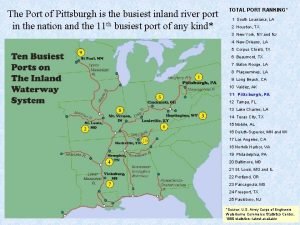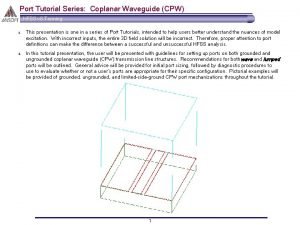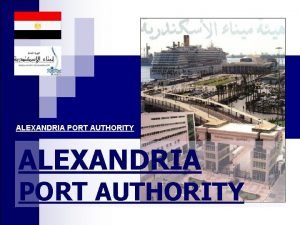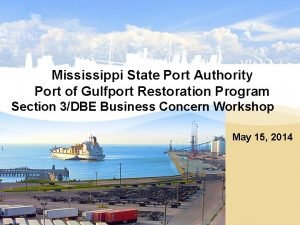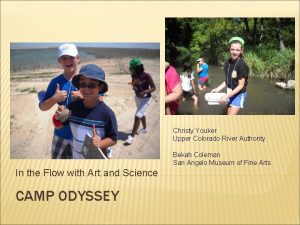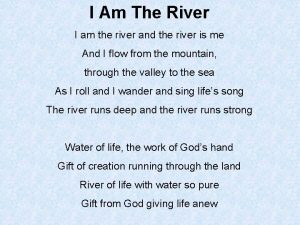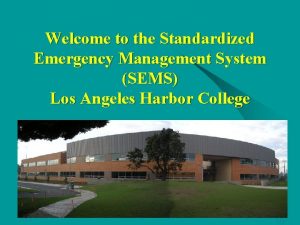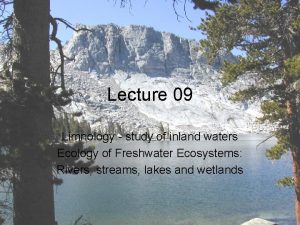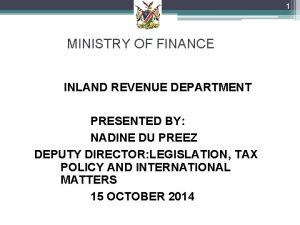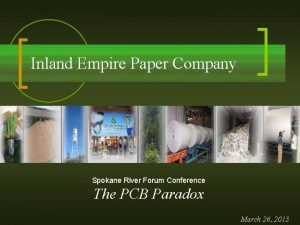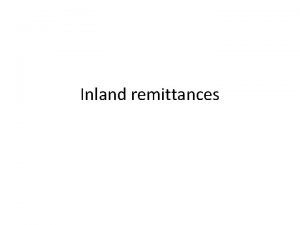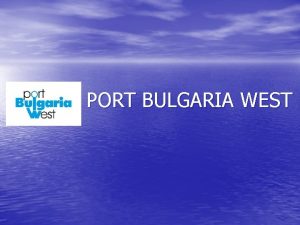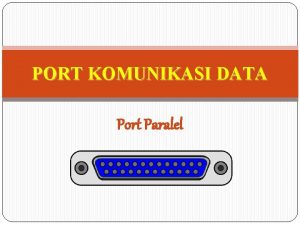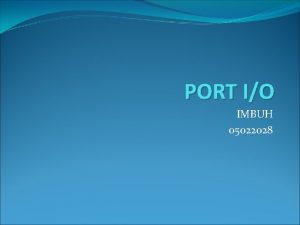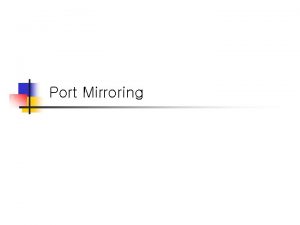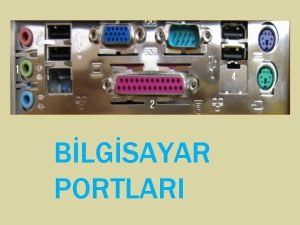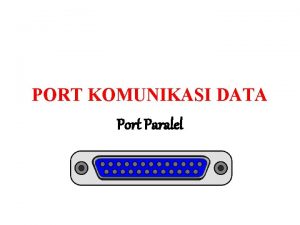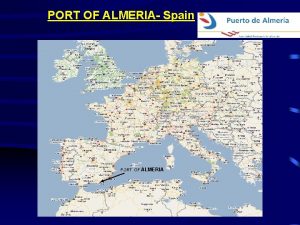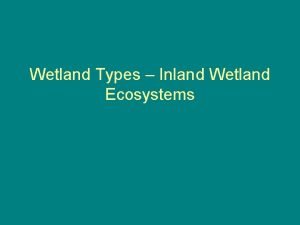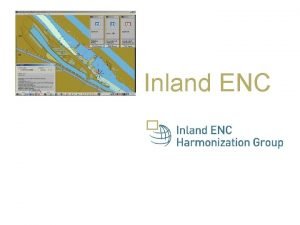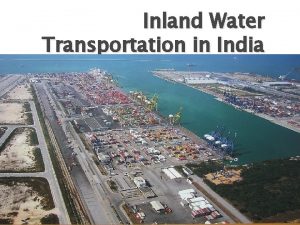Osceola Port Authority and The Inland River System





















- Slides: 21

Osceola Port Authority and The Inland River System Deidre Smith, Director Arkansas Waterways Commission July 24, 2019

“USACE operates and maintains the largest inland coastal Marine Transportation System (MTS) in the world. This waterborne transport network connects American heartland agriculture and minerals with markets overseas and is vital to our economy, security, and quality of life. 98% of all US imports / exports (1. 4 billion tons annually with a value of $2 trillion) move through USACE inland waterway and port projects. 20% of US jobs and 1/3 of our Nations GDP are directly linked to waterborne commerce. ” - LTG Todd T. Semonite, 54 th Chief of Engineers, Commanding General, USACE

We have a PR problem… Why no one attends dredge project ribbon cutting ceremonies:

Business Lines & Benefits

HYDROPOWER ØHydropower generation nationally saves 4 billion tonnes of additional greenhouse gases from being emitted annually from that of coal generated electricity. ØThe global weighted average cost of electricity from hydropower projects in 2018 was $0. 047 per k. Wh, making it the lowest cost source of electricity. ØRevenue from the sale of hydropower electricity goes back into the U. S. Treasury.

FLOOD CONTROL Flood damages are prevented by the dams on the inland river systems. The U. S. Army Corps of Engineers can control the water in the pools and reservoirs behind the dams by raising and lowering the tainter gates at the dams to help prevent the loss of life, and damage to personal property.

The system of waterways and reservoirs in Arkansas enhance outdoor recreation which helps communities along these waterways generate revenue, state business taxes, and provides jobs via increased tourism. RECREATION Last year over 3, 000 recreational boats transited Arkansas’ locks.

CONSERVATION The State of Arkansas has 1, 860 miles of navigable riverfront that are being managed by the U. S. Army Corps of Engineers, Arkansas Game and Fish, and the U. S. Fish and Wildlife to maintain, nurture, provide ecosystem restoration, and protect wildlife habitats.

Nationwide, US Army Corps of Engineer projects produce 6. 5 billion gallons of drinking water every day. WATER SUPPLY

• Most Common Bulk Commodities: NAVIGATION • • • Iron / Steel Chemical Fertilizer Petroleum Products Sand / Gravel / Rock Coke / Coal Minerals / Building Materials Food / Farm Products Wheat Soybeans Equipment / Machinery Manufactured Products

Barge Transportation 101

U. S. Inland Waterway System


Advantages of Inland Waterways Transport: Moving Freight Efficiently Throughout America Transporting freight by water is also the most energy-efficient choice. Barges can move one ton of cargo 616 miles per gallon of fuel. A rail car would move the same ton of cargo 478 miles, and a truck only 150 miles. 616 478 150 Ton-miles Traveled per Gallon of Fuel

Advantages of Inland Waterways Transport: The Greener Way to Move America’s Cargoes Barges have the smallest carbon footprint among other transportation modes. To move an identical amount of cargo by rail generates 30% more carbon dioxide than by barge, and 1, 000% more emissions by trucks than by barge.

Dry Bulk – Grain

Dry Bulk – Fertilizer

Liquid Products


USACE Waterborne Commerce Statistics Center

 Busiest inland river port in us
Busiest inland river port in us Indus river system authority was established in
Indus river system authority was established in Indus river system authority was established in
Indus river system authority was established in Inland marine transportation system certification
Inland marine transportation system certification Read and write signal in 8255
Read and write signal in 8255 8255 control word
8255 control word Hfss wave port tutorial
Hfss wave port tutorial Port arthur housing authority
Port arthur housing authority Dubrovnik port authority
Dubrovnik port authority Port authority
Port authority Gulfport port authority
Gulfport port authority Line authority vs staff authority
Line authority vs staff authority Upper colorado river authority
Upper colorado river authority San joaquin river exchange contractors water authority
San joaquin river exchange contractors water authority I am the river and the river is me
I am the river and the river is me What is sems
What is sems Inland letter writing format
Inland letter writing format Study of inland water
Study of inland water Ministry of finance inland revenue
Ministry of finance inland revenue Meaning of grass
Meaning of grass Inland empire paper
Inland empire paper Inland transfer
Inland transfer
